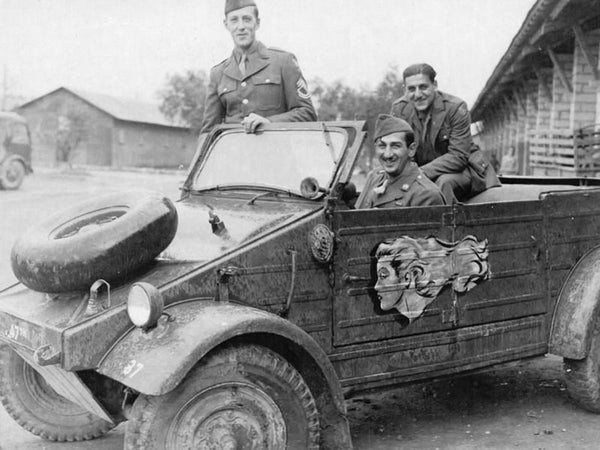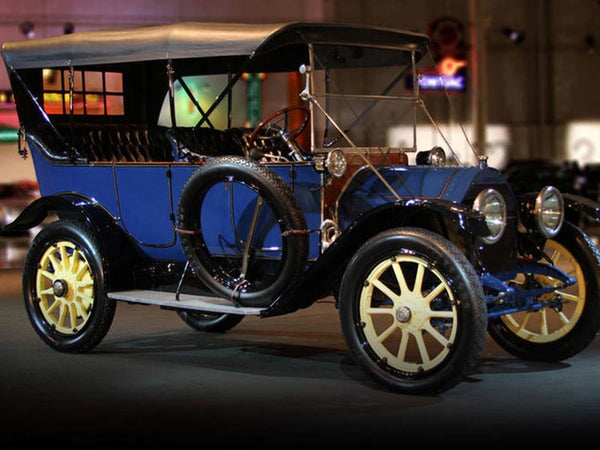1.Disadvantages of short driving range of electric vehicles
Before the early 20th century, American roads were mostly country roads, dusty and muddy, especially when it was cloudy and rainy. The first concrete road was built in Bellfontaine, Ohio in 1893. But then the development of American roads was slow, and until 1904, only about 0.7% of the more than 2 million miles of roads in the United States (about 14,000 miles) were better than mud. Even by 1914, there were no more than 13,000 miles of paved roads in the United States. At that time, the condition of the highway caused the vehicle to only travel in a small area, and there were no higher requirements for the vehicle technology related to the driving range, and the shortcoming of the electric vehicle's driving range was not highlighted.

Pictured: Early American Highways
Cars bring change everywhere. In 1896, personal driving tours became an exciting, dynamic activity. At the end of the 19th century and the beginning of the 20th century, the tourism movement emerged in the United States. Driving a new car to visit the scenery on new roads became a wonderful, comfortable and very popular thing at that time. The public's demand for highways is increasing day by day, and the requirements for highway quality are also getting higher and higher. Therefore, in the 1920s, the US government also paid more and more attention to the construction of highways. In 1920, the United States built the first highway with a total length of 191 kilometers. At the time, government spending on roads was the second-largest public expenditure in the United States, after education. By 1936, the total mileage of U.S. highways had reached about 5.25 million kilometers. With the continuous improvement of the road network, people are more and more keen to drive their cars from one place to another, which gave birth to the unique car culture in the United States, making the United States a "country on wheels". The development of highways should have been the icing on the cake for the development of electric vehicles in their golden age, but now, this is the beginning of the nightmare of electric vehicles. Due to the development of highways, people have put forward higher requirements for the driving range of vehicles, making the problem that the driving range of electric vehicles is too short under the technical conditions at that time has become the main factor hindering the development of electric vehicles.
In addition, while the two world wars caused huge disasters to mankind, they also greatly affected the development of automobile technology, which is a factor that cannot be ignored in the development of electric vehicles and gasoline vehicles. During the First World War, the armies of the major warring countries required a large number of means of transportation. The horse-drawn carriage, which dominated the streets of Europe and the United States before the war, was also quickly replaced by more maneuverable vehicles. If the car in World War I was just a small test, then the highly mobile car in World War II played a pivotal role. In order to meet the needs of the war, all the major warring countries have stepped up the research and development of military vehicle technology, and the world-famous models such as jeeps were developed at that time. In addition, during the six years of World War II, countries around the world produced and equipped about 290,000 tanks. Many civilian car manufacturers have also turned to the production of military vehicles. Take the German Volkswagen "VWBeetle" as an example. At first, only 630 vehicles were produced as civilian vehicles. After the outbreak of the war in 1939, they were quickly converted into light military vehicles. (Type 82 "Barrel Cart") and about 50,000 were produced during the war. It is conceivable that in the ever-changing battlefield, time is life, and it is impossible and impossible to develop electric vehicles with long charging time and short driving range. The demand for transportation in war has greatly promoted the development of the automobile industry, but these technological advances triggered by military needs are basically only aimed at internal combustion engine vehicles, which is also due to the objective needs of war, especially long-distance combat.

Pictured: Volkswagen Type 82 "Barrel Car" in World War II
2.The limitations of the electric vehicle's own technology
Battery technology has made great progress and development in the 19th century, but after entering the 20th century, battery theory and technology were in a state of stagnation. It was not until after the Second World War that battery technology entered a period of rapid development with breakthroughs in basic theoretical research and the development of new electrode materials. But these technological improvements cannot fully meet the range and charging time of electric vehicles even today, let alone a hundred years ago in the early 20th century. It is conceivable that if battery technology was mature enough in the late 19th and early 20th centuries to fully meet the needs of electric vehicles, I am afraid that Ford's mass production of gasoline vehicles would no longer be T-type gasoline vehicles, but T-type electric vehicles. However, history does not allow assumptions, and electric vehicles could not compete with gasoline vehicles at that time due to their own technical limitations.
At the same time, the charging of electric vehicles has also become a factor limiting the development of electric vehicles. In the early 20th century, charging facilities were not widespread, many "service stations (charging stations)" were not connected to the grid, and electric vehicles did not use standard voltages. Therefore, electric vehicle users have to purchase expensive charging equipment to meet the charging needs of electric vehicles of different voltages, which makes it uneconomical to charge electric vehicles. In addition, the generation facilities of this period were not standardized, some provided the direct current recommended by Edison, and some provided the alternating current advocated by Westinghouse and Tesla. The power grid is not standardized and there is no standard voltage. Even if power generation facilities are available, they cannot be directly plugged in for charging, which makes charging electric vehicles inconvenient.
What's more, rural electrification did not begin in the United States until the 1930s. Before that, the majority of the U.S. population lived in rural areas, and the travel distances between rural and urban, and between rural and rural areas were often long, requiring cars with longer driving ranges. The specific energy of gasoline fuel used by internal combustion engines is much higher than that of batteries. A gallon of gasoline weighs 6.15 pounds and has 37.4 kilowatt-hours of energy, while a battery pack that stores the same amount of energy weighs 2,200 pounds. That said, to travel the same distance, EVs can get quite bulky. Therefore, people have purchased gasoline vehicles that can drive for a long time and are easy to refuel, while electric vehicles have been neglected due to their short driving distance and long charging time. Around 1900, a fully charged battery could give Maxim's electric car 25 miles, but a full Winton's gasoline car could go 200 miles. It takes up to 5 hours to charge the battery and 5 minutes to fill the tank! Therefore, the disadvantage of electric vehicles in terms of driving range is continuously magnified with the continuous improvement of road conditions. People who are keen to travel obviously will not choose electric vehicles that can only travel for short distances and are difficult to charge.

Pictured: Winton's second car in 1897
3.Breakthrough development of internal combustion engine vehicle technology
Early cars, like some tractors today, were cranked by hand to start the engine. Such a starting method is laborious, especially for women, and people are trying to find a way to start the engine without hand cranking. There is also a slightly sad story. It is said that an English gentleman who was a good friend of the then GM boss was killed when the start lever flew out when he started the car for a lady who stopped the engine halfway. With grief, the boss ordered a tough battle for starter technology, hoping to prevent similar situations from happening. In 1910, General Motors engineers invented the first car starter, which was successfully tested in 1911. This invention eliminates hand cranking, greatly facilitates the starting of gasoline vehicles, and greatly improves the safety of gasoline engines.

Pictured: (1912) The first car to start without a hand crank
The noise of early gasoline cars was very disturbing. Maxim invented the Maxim muffler, patented in 1909, and successfully commercialized. He also developed mufflers for guns and mufflers for vehicles. The technology and principle of these two mufflers are basically the same. For gasoline vehicles, a large part of the noise comes from the violent vibration of the exhaust pipe when the exhaust is discharged. The muffler is installed on the exhaust pipe as a part of the automobile exhaust system. The gas discharged from the internal combustion engine is discharged into the air after passing through the muffler, which effectively reduces the noise of gasoline vehicles. It can be said that Maxim has made a great contribution to the noise control of gasoline cars, but his invention of the muffler for guns has "assisted" the guns to take thousands of lives.
4.Weak awareness of environmental protection
The industrial development of western developed countries took the road of "pollution first and then treatment" in the early days of liberal capitalism. Although Emerson, Thoreau and Marsh, who are known as the source of contemporary American environmental protection movement theory, have realized and called for the harmonious coexistence between man and nature in the 19th century, human's demand and destruction of nature have not stopped. Although electric vehicles are much "cleaner" than internal combustion engine vehicles, few people paid attention to the noise, smell and pollution caused by internal combustion engine vehicles when people were numb to the protection of the natural environment at that time. Many men believe that driving a car that emits black smoke and roars can better reflect the masculinity of men and is a kind of fashion. It was not until later, when the environment continued to deteriorate and environmental pollution accidents occurred frequently, that people realized the importance of environmental protection and arose the environmentalism movement. In 1969, the United States enacted the National Environmental Protection Act. In December 1970, the Environmental Protection Agency was established. Because of this, after a few years, electric vehicles have attracted people's attention again due to their clean and non-polluting characteristics, and they have re-entered the historical stage of the automobile industry.